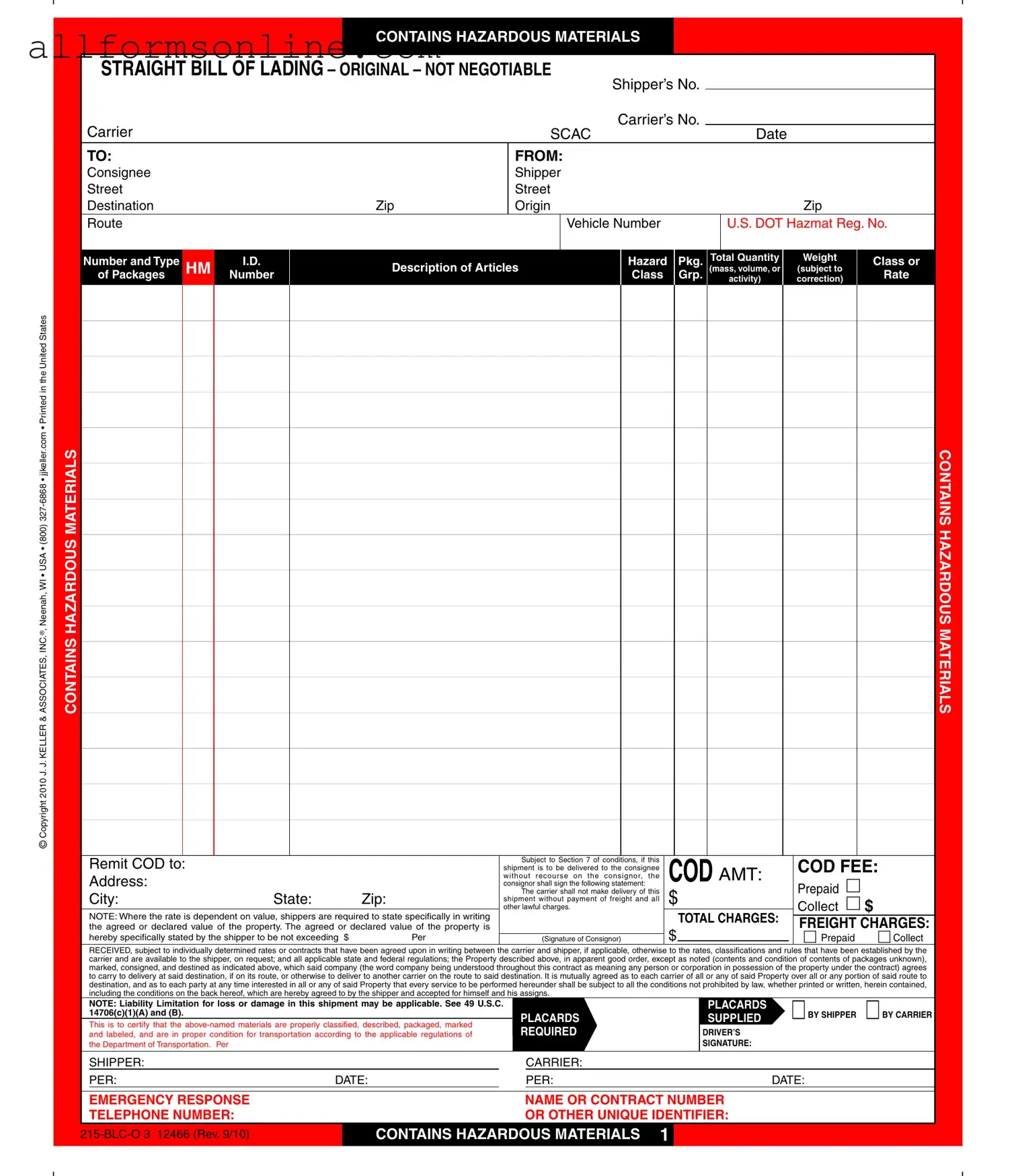What is the Hazard Bill of Lading form?
The Hazard Bill of Lading form is a shipping document used for transporting hazardous materials. It provides essential information about the shipment, including details about the shipper, consignee, and the nature of the hazardous materials being transported. This form ensures compliance with federal and state regulations regarding the handling and transportation of hazardous goods.
Who needs to use the Hazard Bill of Lading form?
Any shipper who is transporting hazardous materials must use the Hazard Bill of Lading form. This includes businesses that handle chemicals, explosives, or any other materials classified as hazardous. Proper use of this form helps ensure safety and regulatory compliance throughout the transportation process.
What information is required on the Hazard Bill of Lading form?
The form requires several key pieces of information, including the shipper's and consignee's names and addresses, a description of the hazardous materials, the total quantity and weight, and any applicable freight charges. Additionally, the shipper must declare the value of the property being shipped and sign the form to confirm accuracy.
What are the consequences of not using the Hazard Bill of Lading form?
Failure to use the Hazard Bill of Lading form can lead to significant legal and financial consequences. Shipments may be delayed or rejected by carriers, and the shipper could face penalties for non-compliance with hazardous materials regulations. In the event of an accident or incident involving the shipment, liability issues may arise, potentially resulting in costly damages.
How does the Hazard Bill of Lading form affect liability?
The Hazard Bill of Lading form outlines the liability of the carrier and the shipper. It specifies that the carrier may limit its liability for loss or damage to the value declared by the shipper. Additionally, if hazardous materials are shipped without prior written notice, the shipper may be held jointly liable for any resulting damages. Understanding these terms is crucial for both parties involved.
What should I do if there is a claim for loss or damage?
If there is a claim for loss or damage, it must be filed in writing with the carrier within nine months of delivery or the expected delivery date. Ensure that all necessary documentation, including the Hazard Bill of Lading form, is included with the claim. Failing to follow these guidelines may result in the claim being denied.
